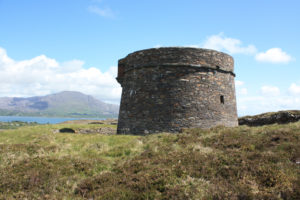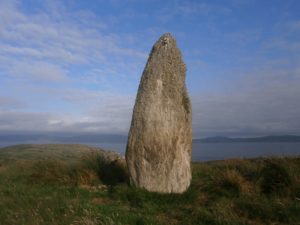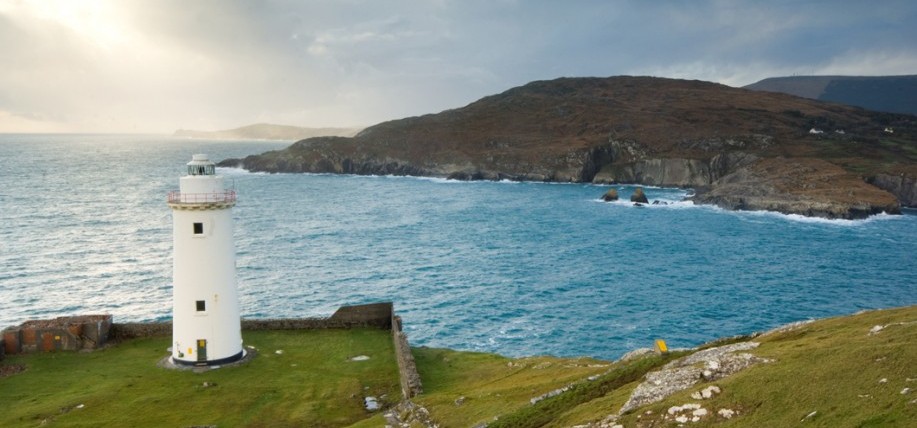A community of healers gathers for a retreat on the role of spirituality in healing.
Bere Island is a small island a mile off the southwest coast of West Cork. Twice as long as it is wide and covering an area of about 20 square miles, it has a population of slightly over 200 people.
You can travel to Bere Island by one of two ferries and this in itself is an experience, as the cars have to be reversed onto the ferry and driven off at the other side. Reversing down a narrow slipway with the water lapping the side is not for the fainthearted, but it does emphasize the move from the solid ground of Castletownbere to an island – apart and away from everyday existence
This going apart from everyday existence is exactly what I and 20 other health care professionals did some weeks ago as we gathered for a retreat on “The Power of the Small” which was being held on the island. This retreat was led by Fr. Laurence Freeman, OSB, and the questions posed were designed to elicit reflection and discussion on the role of spirituality in health care. Those trying to tease out the answers were a disparate group of doctors, psychologists, counsellors, nurses, and therapists. This group brought a wide range of experience as they had come from as far afield as Brazil, Canada, U.S., Scotland, England and Ireland. The physical apartness of the island as well as its incredible beauty helped to reinforce our sense of being secluded and the value of the questions being raised.
It is this sense of “being apart” that is our first experience of being ill. A pounding headache will drive us under the bedclothes, enveloped in pain and isolation. This is no different for the patient in hospital recovering from surgery. Both situations involve a diminishment of normal everyday activities and a transitory state of being set apart. It is the small gesture, such as a cup of tea, a smile, or eye contact that breathes the intangible and the indefinable into us in these situations and lessens the pain and aloneness. It makes us want to live again. Despite all the technological advances of modern medicine, it must still rest on a bed of compassion and sympathy proffered by medical personnel. The well-being (in the full sense of the word) of the nurse, doctor, attendants, therapists, is therefore key to the patient regaining his sense of wholeness and health.

The importance of the small gesture was reinforced for me not only by the title and theme of the retreat – The Power of the Small – but also by a small gesture by Edel, from Beara Lodge, on my second day on the island. I was staying alone in a friend’s house and there were no coffee filters to make fresh coffee. I love my coffee, so eschewing the asceticism of the Skellig Michael monks of the distant past, I went to purchase coffee filters at the only shop on the island, which is in the village of Rerrin. It had no coffee filters but the lady suggested I step into a café behind the shop as the lady there might have some. The lady in question was Edel, and when she heard of my predicament she suggested a cafeteria as an alternative and promptly presented me with the loan of one for the duration of my stay. I was never asked where I was staying, who I was, or what was I doing on this small island at the mouth of Bantry Bay. Such is the significance and appreciation of the small, be it in sickness or health.
Unlike most retreats, where the participants stay together in a monastery, we also ‘stayed apart’ in local B&Bs. In this way we mirrored the very old monastic settlements, where the monks used to live in separate huts, such as those on Skellig Michael and who only gathered together for community celebrations.
Thankfully, ours were nowhere near as harsh as those occupied by Irish ascetics of old, and Beara Lodge as well as the other hostelries achieved full marks for food, chat and conviviality. The main talks, meditation and discussion then took place in the Heritage centre with the beauty of the island being our teacher each afternoon.

Just as nature inspires us to contemplate the mystery of life when in health, our environment also helps us recover our health when we are ill. If our surroundings are not conducive to rest and restoration, we will be left in a state of ill health longer.
The Irish Liaig (Physician) of the 10th century was well aware of the importance of the environment for his patients. Two documents dating from that time tell us that a patient must not be asked to reside in a dwelling which he finds revolting, or in a place where he feels his injury will be increased. The place must not be too bright, and there must be no glare from sea, waterfall, or cliff. Needless to say, barking dogs and grunting pigs were also banished from the environs. The key issues here are beauty, safety and quiet. In our modern technologically driven healthcare system this can mean pleasing décor, much less noise, and confidence in the ability of the medical personnel. The beauty of Bere Island was definitely balm for all of us and we could feel the stress and strains of the everyday melt into the calm waters and beautiful sky-scapes that greeted us daily.
Ill health may not return to good health and the transitory nature of all things was also reinforced on Bere Island with both its megalithic and military monuments. Positioned right in the middle of the island is an amazing standing stone, and the question of who determined the calculations of its exact position, and what was its purpose, were riddles to us as we appreciated its magnificence. These megalithic sites of southwest Ireland are intriguing in their beauty, alignments and structure, but they also frustrate us with the realization that their knowledge has passed away, leaving us only with questions and no answers.
Other monuments include the Lonehart battery and the Martello and watch towers. These are the remains of Britain’s military presence on the island as it sought to turn Bere into another Gibraltar, an impregnable fortress on its western flank. Now they rust and fall into ruins, testimony to the passing of time and diminished imperial might.

The transient nature of life is therefore to be seen all around us and needs then to be incorporated into our understanding of health, if we are to achieve spiritual and emotional wholeness in the face of an illness that will not return us to strength and vigor. Medical technology needs to rest on the cushion of mortality, as the lovely Irish expression of condolence captures – “The young may die but the old must.” It is this acceptance of death as the natural end to life that allows the spiritual dimension of life to be incorporated into health care. This is because healing is more than curing, it is about becoming whole, and this wholeness is the true reality of being human. Suffering affects us mentally and emotionally as well as physically and if we do not use the fourth aspect of our being, namely the spiritual, to integrate that suffering, we do not initiate the great healing process that illness can engender in us.
The first step in integrating the suffering associated with ill health is to accept its presence. Acceptance of reality is stressed in all major spiritual traditions, and it is the hallmark of harmony between all aspects of our being. The one reality that needs to be accepted when ill is the illness itself and all that accompanies it. This is not a passive act but a clear choice to accept the situation in the here and now and work from there. The one major consequence of this is peace of mind and soul, but this acceptance is usually a step-after-step process rather than a single decision.
The next choice is the acceptance that a return to health may take time, and it is only when we have recovered that we realize that illness and its attendant suffering has changed us. It makes us more patient, more keenly aware of the transience of life, and grateful for the expertise and care of those who look after us when we are sick. It makes us absorb stillness like a sponge and revel in its timelessness.
But the quietness and accompanying silence that envelop us when lying ill in hospital or at home can be overwhelming. It can even be frightening and isolating. This silence is, however, an opportunity to listen to the intangible, the imperceptible, the indefinable. It is in this silence that the mystery of the universe unfolds, and like a flower it needs warmth and time.
By the time of our departure from Bere Island we were keenly aware of the need to explore the role of spirituality in suffering and how as medical personnel it behooved us to be well grounded in our own spiritual tradition so as to deliver the best possible care to those under our charge. It is beneficial to know that those present on this beautiful island in West Cork will be returning to hospitals and clinics imbued with the knowledge that spirituality is part of healing, and integration of spirituality to medical care is not antagonistic to best practice.
_______________
Rosari Kingston is a Medical Herbalist in the Irish Tradition, and Director of the Irish College of Traditional & Integrative Medicine. Her area of research is the Irish Healing Tradition and she lectures frequently on this topic.


I almost cried with relief when I saw the article about spiritual healing in Bantry Bay, Bere Island. I am at my breaking point after being hospitalized with diverticulitis followed two weeks later with C.Diff and while not completely well, I can’t take any more beatings but don’t seem to have the energy to pickmyself back up. I had also just had rotator cuff surgery December 4 so still not even over all that. I need natural, nutritional, spiritual and detoxification help. I need to turn my health around before it’s too late. I am a 58 year old female and a UK ex-patriot. I do have John Hancock LTC insurance in the U.S. and was hoping it could help me find a place in this idyllic situation. Any help or pointers would be greatly appreciated.